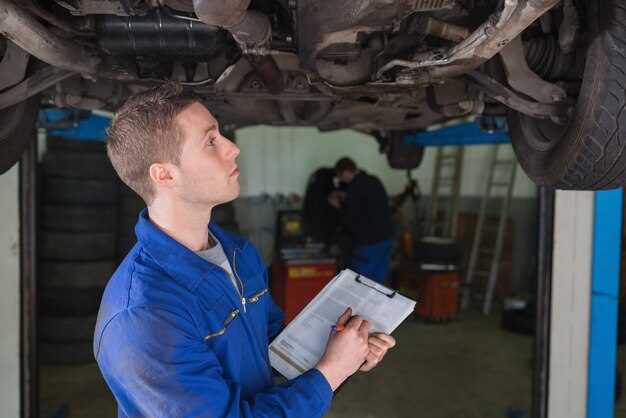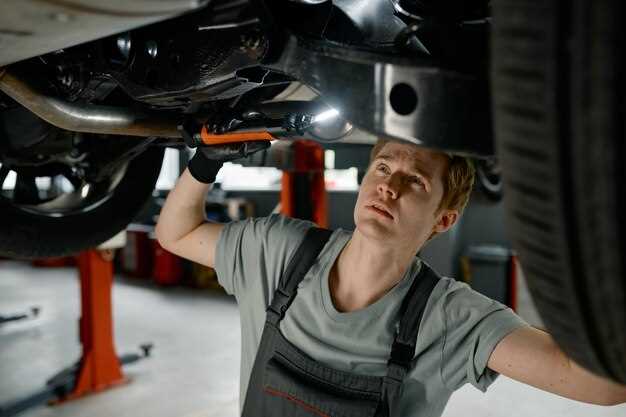

The suspension system of your vehicle plays a crucial role in ensuring a smooth ride and maintaining control on the road. Regularly checking your suspension is essential for safety and performance. A well-functioning suspension not only enhances comfort but also contributes to better handling and stability. In this guide, we will walk you through the steps to effectively inspect your suspension system.
To begin the inspection process, it is important to check for any visible signs of wear and tear. This includes examining the shock absorbers, struts, and springs for leaks, cracks, or damage. Look for any unusual noises when driving over bumps, as this could indicate potential issues within the suspension system. Addressing these concerns early can prevent more extensive repairs down the line.
Next, you should perform a bounce test to assess the overall condition of your suspension. By pushing down on each corner of the vehicle and observing how it reacts, you can gain insight into the performance of your suspension. A properly functioning system will return to its original position quickly after being released. If the vehicle continues to bounce, it may be time for further investigation or repairs.
In the following sections, we will delve deeper into each component of the suspension system, providing you with a comprehensive step-by-step guide to ensure your vehicle remains safe and reliable on the road. Understanding how to inspect your suspension is key to maintaining your vehicle’s performance and longevity.
Identifying Signs of Suspension Wear and Damage
Recognizing the signs of suspension wear and damage is crucial for maintaining vehicle stability and ensuring safe driving conditions. A well-functioning suspension system absorbs shocks, provides comfort, and contributes to overall vehicle handling. Here are some key indicators that your suspension may be compromised.
First, pay attention to unusual noises. If you hear clunking, rattling, or squeaking sounds while driving, it may indicate worn out components such as bushings or struts. These noises can signal that parts are no longer functioning properly, affecting the stability of your vehicle.
Next, observe the way your vehicle handles on the road. If you experience excessive bouncing or swaying during turns, this can be a sign of worn shock absorbers or struts. A stable suspension system prevents these movements, maintaining control and comfort while driving.
Additionally, check for uneven tire wear. If you notice bald spots or uneven tread on your tires, it could suggest that your suspension system is not holding the vehicle evenly. This misalignment can lead to further damage and impair stability on the road.
Another sign is difficulty maintaining a straight path. If your vehicle pulls to one side while driving on a straight road, it may indicate an issue with the suspension components, such as misaligned wheels or worn out parts. Ensuring proper alignment is essential for maintaining stability and optimizing tire life.
Lastly, inspect the physical condition of suspension parts. Look for signs of leakage around shock absorbers, bent or broken components, and any visible cracks in bushings. Regular visual inspections can help you catch issues early before they become major problems affecting your vehicle’s stability.
In summary, being vigilant about these signs of suspension wear and damage will help you maintain your vehicle’s stability and ensure a safer driving experience.
Tools and Techniques for a Comprehensive Suspension Check

To perform a thorough suspension check, having the right tools is essential. Here are some key tools and techniques that will help you assess the condition of your suspension system effectively.
1. Jack and Jack Stands: Start by raising your vehicle with a jack to provide access to the suspension components. Always use jack stands for safety to ensure the vehicle remains elevated while you work.
2. Visual Inspection Tools: A good flashlight will help you inspect the suspension system for any visible signs of wear or damage. Look for cracked rubber bushings, leaking shock absorbers, or broken components.
3. Wrench and Socket Set: These tools are necessary for loosening and tightening bolts that secure various parts of the suspension. Familiarize yourself with the specific sizes required for your vehicle.
4. Pry Bar: This tool is useful for checking the movement of suspension components. It allows you to apply leverage to components, which helps identify any play that may indicate wear.
5. Tire Pressure Gauge: Proper tire pressure is crucial for suspension performance. Use a tire pressure gauge to check that all tires are inflated to the manufacturer’s specifications.
6. Bounce Test: Perform a bounce test by applying weight to the corners of the vehicle. If the suspension rebounds multiple times, it may indicate that the shock absorbers are worn out and need replacement.
7. Test Drive: After inspecting the suspension components, take the vehicle for a test drive. Pay attention to any unusual noises, vibrations, or handling issues that may suggest a problem with the suspension system.
Utilizing these tools and techniques will enable you to conduct a comprehensive suspension check, ensuring your vehicle operates smoothly and safely on the road.
Adjusting Suspension Components for Optimal Vehicle Stability

Proper adjustment of suspension components is crucial for enhancing vehicle stability. By making precise changes, you can improve handling, reduce body roll, and ensure a smoother ride. Follow these steps to adjust your suspension system effectively:
- Assess Current Suspension Setup
Before making adjustments, evaluate the existing suspension. Check for uneven tire wear, vehicle stance, and handling characteristics during various driving conditions.
- Identify Suspension Components
Familiarize yourself with the key components of your suspension system:
- Shock absorbers
- Struts
- Springs
- Control arms
- Sway bars
- Adjust Shocks and Struts
If your vehicle has adjustable shocks or struts, changing their settings can enhance stability:
- For better ride comfort, reduce firmness.
- For increased handling precision, increase firmness.
- Modify Spring Height
Adjusting spring height can lower or raise your vehicle, impacting its center of gravity:
- Lowering the vehicle may reduce body roll and improve handling.
- Raising the vehicle can enhance off-road capability but may lead to increased body sway.
- Check and Adjust Sway Bars
Sway bars help control body roll during cornering. Adjusting their stiffness can influence stability:
- Stiffer sway bars reduce roll and improve cornering response.
- Softer sway bars offer better ride comfort but may compromise handling.
- Inspect Control Arms and Bushings
Examine control arms and bushings for wear or damage. Replacing worn components will improve alignment and stability.
- Test Drive and Evaluate
After making adjustments, take the vehicle for a test drive. Monitor changes in handling, ride comfort, and stability. Fine-tune settings as necessary to achieve the desired balance.
Regular maintenance and proper adjustments of suspension components are essential for maintaining optimal vehicle stability. Following these steps can lead to improved performance and a safer driving experience.







